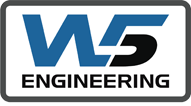Sustainability and simulation machines – Testing machines are a very effective tool to reproduce in a laboratory environment the real conditions to which the load is subjected during its handling and transport, in order to design a more efficient packaging.
In addition, this process with simulation machines makes it possible to achieve an improvement in the sustainability of the packaging. At Safe Load Testing Technologies we discuss why and how to achieve it.
Testing machines: a step towards efficiency
The optimization of packaging through testing machines implies the elimination of two possible negative scenarios.
For one thing, it avoids underpackaging; that is, a package that offers less protection than that required for the product being transported. Through the use of transport simulation machines, it is possible to prevent and avoid economic losses associated with product damage during the distribution cycle.
On the other hand, these tests also help to avoid overpackaging, that is, the packaging is optimized so that not only the safety of the merchandise is guaranteed, but it is suitable for it and not excessive, which usually generates unnecessary costs.
The testing machines were created to carry out packaging tests in a laboratory environment, which allow an adequate design thanks to the simulation of the possible scenarios and contingencies that can occur during the distribution cycle.
For this, the following technologies and simulation machines are used:
- Vertical vibration systems. They simulate the vibrations that take place during the transport of goods, testing the protective capacity of the packaging. When combined with the Pitch & Roll Module, the simulations more closely reflect the transport conditions, since it adds the rolling and pitching movements to the simulation of vertical vibrations.
- Impact machines, either inclined impact or horizontal impact, which simulate the damage caused by different types of impacts during the transport and handling of the merchandise.
- Data recording systems, which record the real hazards that occur during the distribution cycle (shocks, vibrations, accelerations…) to later analyze the data and reproduce these events in the different transport simulation solutions available in a laboratory environment. .
- Compression gauges, reproduce the compression forces that occur during the distribution cycle, such as when stacking boxes
- Drop machines simulate free falls or rotational impacts that occur during the distribution of packages, either during transport or handling carried out by the personnel of the parcel company.
- Horizontal stability systems such as the innovative innSlide Boomerang, which simulates the accelerations and decelerations that occur during transport, mainly by road. This machine allows to measure the stability and rigidity of the load in order to optimize the packaging so that it is safe and resists the distribution cycle.
- Vision measurement systems. The innVision family is made up of two high-speed artificial vision systems to record and analyze the deformation of the load unit.
Sustainability and simulation machines
Optimization through the use of testing machines not only makes the entire distribution cycle a safer process, but is also an essential step in achieving more sustainable packaging.
Studying the characteristics of the product + packaging system offers several advantages:
- Use of less material. For example, when it comes to tertiary packaging, transportation simulation machines can reduce the use of stretch film, which in turn reduces stretch wrapper machine hours, waste generation, and CO2 emissions during the manufacturing and transportation process.
- Reducing the size of the package, whether primary, secondary or tertiary, implies a greater optimization of the cargo space, minimizing CO2 emissions.
In addition, the use of testing machines allows to test the specifications and the protective capacity of the materials. This phase is of great importance when it comes to designing the packaging and choosing the most suitable materials for the product to be transported and the distribution cycle that it is going to face. This also allows testing new, more sustainable and ecological materials, one of the key points of ecological packaging, a growing trend in the packaging sector.
This type of material includes options such as:
- Stretch film or stretch film, made with non-petroleum resins.
- Envelopes made with recycled paper that can protect the merchandise.
- Sustainable adhesive tape.
- Sustainable solutions to cushion the content of the packaging, such as corrugated cardboard or biodegradable inflatable bags.
Driven by the new regulations and greater awareness on the part of the end customer, many companies are already working to improve the sustainability of their packaging.
Additionally, 2019 brought a regulation that changed the playing field for many companies: Amazon announced the implementation of its Frustration-Free Packaging program, which aims to reduce packaging material as much as possible. Amazon Lab was created to optimize packaging to this new standard: a set of test machines specifically designed to meet the provisions of the Frustration-Free Packaging program and become certified by Amazon to sell through its distribution network.
These and other initiatives show that sustainable packaging is the way forward, and we are ready to help companies get started with it.
Our more than two decades working in the packaging and packaging optimization industry are a testament to our work, and our simulation machines have already helped several companies save costs and generate more effective distribution cycles.
Get in touch with us and let’s talk about how we can help you.


